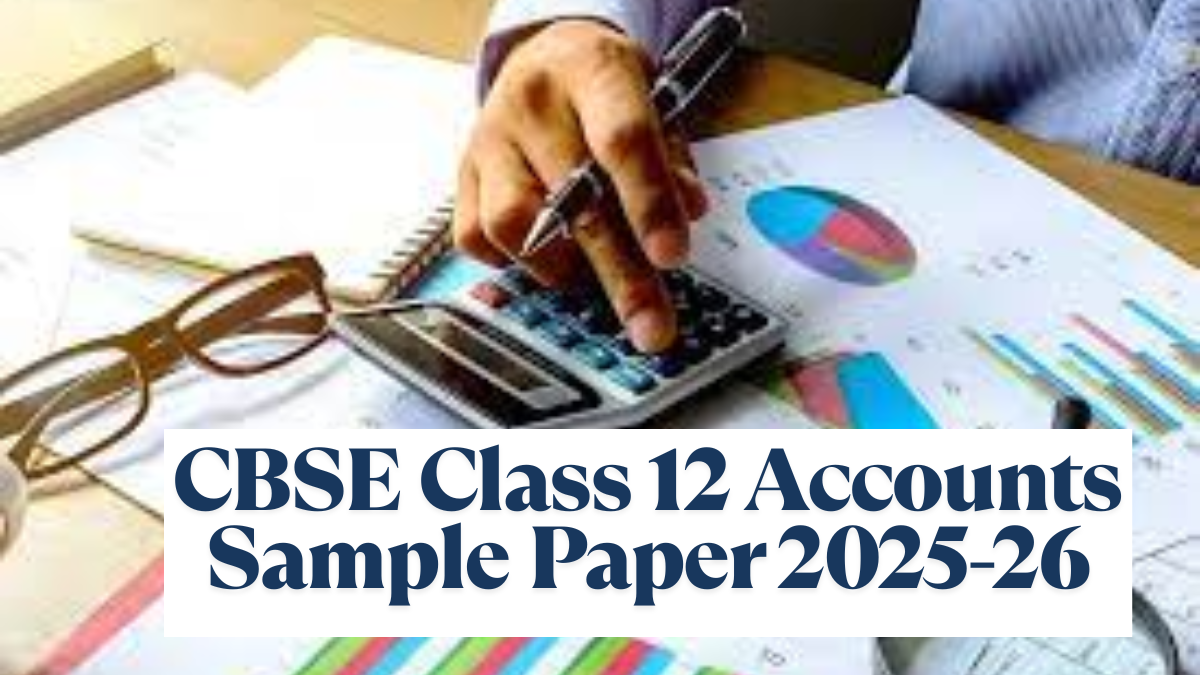If you’re looking for the CBSE Class 12 Accountancy Sample Paper for 2025-26, you can download it from this page. These sample papers are great for helping students prepare for their final board exams. Sample papers or model papers are one of the best ways to practice and get ready.
The CBSE Class 12 Accountancy Sample Paper gives students a chance to experience what the real exam will be like. It helps them see if they are fully prepared and boosts their confidence in answering questions.
If you make any mistakes while practising, you can focus more on those areas to avoid errors in the actual exam. Here, you can find the CBSE Class 12 Accountancy sample question paper along with solutions.
CBSE Class 12 Accounts Sample Paper 2025-26
CBSE Class 12 Accountancy Syllabus equips students with basic knowledge of the core accounting skills, methods, and advances in preparing & presenting financial statements according to the provisions of the Companies Act 2013. Upon completion of the syllabus, students need to practice CBSE Class 12th accounts sample papers and other important questions.
The duration of the CBSE Class 12 Accountancy examination is 3 hours, and the total marks are 100 (80 Theory subject + 20 Practical/Project work). It consists of Part A and Part B. Part A is for (60 marks). and Part B for (20 marks). Part B will give you an option to study Financial Statement Analysis or use Computerised Accounting.
Accounts Sample Paper Class 12 2025-26 PDF Download
The Central Board of Secondary Education has released the Class 12 Sample papers for all three streams on the academic portal. Students can download the Accounts Sample paper Class 12 2025-26 with solutions from https://cbseacademic.nic.in/ or the direct link shared on this page.
| Accounts Sample Paper Class 12 2025-26 with solutions PDF Download | |
| Sample Paper PDF | Click here |
| Solution Key | Click here |
Class 12 Accounts Sample Paper Pattern
CBSE Class 12th Accounts sample paper exactly replicates the paper pattern of the real board exam paper. This allows aspirants by providing crucial insights into the question paper, including the marking scheme, types of questions, and other things.
1. This Class 12 Accounts question paper contains 34 questions. All questions are compulsory.
2. This question paper is divided into two parts, Part A and B.
3. Part A is compulsory for all candidates.
4. Part B has two options, i.e., (i) Analysis of Financial Statements and (ii) Computerised Accounting. Students must attempt only one of the given options.
5. Question 1 to 16 and 27 to 30 carry 1 mark each.
6. Questions 17 to 20, 31and 32 carry 3 marks each.
7. Questions from 21,22, and 33 carry 4 marks each
8. Questions from 23 to 26 and 34 carry 6 marks each
9. There is no overall choice. However, an internal choice has been provided in 7 questions of one mark, 2 questions of three marks, 1 question of four marks, and 2 questions of six marks.
CBSE Class 12 Accounts Sample Paper with Solutions
Part A:- Accounting for Partnership Firms and Companies
1. A partner’s capital account was credited with ₹80,000 during the year. Which of the following can be the possibility for such a credit in his capital account?
A. Opening Balance B. Drawings during the year
C. Loss during the year D. Capital introduced
Answer: D. Capital introduced
OR
Assertion (A):- A Fluctuating Capital Account can show a debit balance.
Reason (R):- Losses and Drawings can be more than the Capital Balance.
A. Both A and R are correct, and R is the correct explanation of A
B. Both A and R are correct, but R is not the correct explanation of A
C. A is correct , but R is incorrect
D. Both A and R are incorrect.
Answer: A. Both A and R are correct, and R is the correct explanation of A
2. On 1st July, 2024, A, B, and C entered into a partnership sharing Profits & Losses in the ratio 5:3:2. C was guaranteed that his share of profits would not be less than ₹ 60,000 p.a. Deficiency, if any, will be borne by A and B equally. For the year ended March 31, 2025, the firm incurred a loss of ₹ 1,25,000. Deficiency will be borne by A and B will be:
A. A ₹ 30,000 and B ₹ 30,000
B. A ₹ 43,750 and B ₹ 26,250
C. A ₹ 42,500 and B ₹ 42,500
D. A ₹ 35,000 and B ₹ 35,000
Answer: D. A ₹ 35,000 and B ₹ 35,000
3. Pali Limited offered 2,00,000 shares of ₹ 10 each at a premium of ₹ 2 per share. Applications were received for 1,95,000 shares, which were duly allotted. The amount was payable as ₹3 on Application (including ₹1 premium), ₹ 6 on Allotment (including ₹1 premium), and the balance on
call. Manoj, holding 6,000 shares, failed to pay allotment money, and his shares were immediately forfeited. Out of the forfeited shares, 4,000 shares were reissued @ ₹ 11 per share as fully paid up. The amount of Capital Reserve will be:
A. ₹ 16,000 B. ₹ 12,000 C. ₹ 8,000 D. ₹ 18,000
Answer: C. ₹ 8,000
OR
Prafful Limited forfeited 15,000 shares of ₹ 20 each on which ₹ 8 (including ₹ 2 premium) was paid. Out of these 13,000 shares were reissued @ ₹ 19 per share as fully paid up. Determine the amount of Share Forfeited balance.
A. ₹ 90,000 B. ₹ 91,000 C. ₹ 12,000 D. ₹ 16,000
Answer: C ₹ 12,000
4. Pista Ltd. took over the running business of Vista Ltd., comprising Assets of ₹ 45,00,000 and Liabilities of ₹ 7,50,000, and in consideration issued them 30,000, 9% debentures of ₹ 100 each at 5% discount and a cheque of ₹ 10,00,000. Determine the amount of Goodwill or Capital
Reserve.
A. Goodwill ₹ 9,00,000 B. Capital Reserve ₹ 9,00,000
C. Goodwill ₹ 1,00,000 D. Capital Reserve ₹ 1,00,000
Answer: C. Goodwill ₹ 1,00,000
OR
Dawn Ltd. purchased Equipment and paid ₹ 2,20,000 by cheque and issued 16,000 equity shares of ₹ 10 each at 25% premium. The purchase consideration will be:
A. ₹ 3,40,000 B. ₹ 4,20,000 C. ₹ 3,80,000 D. ₹ 2,00,000
Answer: B. Rs. 4,20,000
5. Bala and Lala were partners in a firm with Capitals of ₹ 24,00,000 and 16,00,000. They admitted Mala as a new partner for a 1/3 share, for which Mala brings ₹ 20,00,000 as capital. Investment and Investment Fluctuation Reserve were appearing in the books of ₹ 2,50,000 and ₹ 50,000, respectively. Bala took over 40% of the Investments at ₹ 80,000, and the remaining Investments were valued at ₹ 1,10,000. By what amount Revaluation account be affected for the above information?
A. Debited ₹ 60,000 B. Credited with ₹ 60,000
C. Debited ₹ 10,000 D. Credited ₹ 10,000
Answer: C. Debited ₹ 10,000
6. Jai and Veeru were in a partnership sharing Profit &Loss in the ratio 5:3. Their Capitals were ₹ 10,00,000 and ₹ 8,00,000, respectively. The firm was also having reserves of ₹ 7,00,000. The normal rate of return was 10%. The firm made average profits of ₹ 2,30,000 for the year ended March 31, 2025 (after adjustment of loss of machinery of book value of ₹2,00,000 by fire, against which an insurance claim of ₹1,50,000 was admitted). Value of goodwill as per Capitalisation of super
profits will be:
A. ₹ 10,00,000 B. ₹ 3,00,000 C. ₹ 18,00,000 D. Nil.
Answer: B . ₹ 3,00,000
7. On 1st August, 2024, Tom, Jerry, and Tyke entered into a partnership with capital of ₹5,00,000 each. Interest on Drawings was to be charged @ 6% p.a. For the year ended March 31, 2025, Tyke withdrew ₹ 80,000. What amount of Interest on drawings will be charged from Tyke?
A. ₹ 4,800 B. ₹ 1,600 C. ₹ 3,200 D. ₹ 2,400
Answer: B. ₹ 1,600
8. A, B, and C were partners sharing Profits &Losses in the ratio 7:2:1. B died. A took over 1/20 from his share, and the remaining share was taken over by C. Determine the new profit-sharing Ratio.
A. 4 : 1 B. 7 : 1 C. 71 : 29 D. 3 : 1
Answer: D. 3: 1
OR
X, Y, and Z were partners sharing profits & Losses in the ratio 5:3:2. Y retired, and he gifted half of his share to X, and the remaining half was taken over equally by X and Z. Determine the new Profit-sharing Ratio.
A. 29 : 11 B. 13 : 7 C. 1 : 1 D. 5 : 2
Answer: A. 29: 11
9. X, a partner, was assigned to look after the dissolution process and was allowed remuneration of ₹ 15,000. Actual realisation expenses amounted to ₹ 20,000, being paid by another partner, Y. By what amount Realisation account be debited for the above-mentioned information?
A. ₹ 20,000 B. ₹ 35,000 C. ₹ 5,000 D. ₹ 15,000
Answer: B. ₹ 35,000
10. Arun and Barun were partners sharing Profits &Losses in the ratio 3:2. They admitted Charan into the partnership for a 20% share. Charan was to bring proportionate Capital, and he brought ₹ 3,50,000 (including ₹ 50,000 for goodwill share) into the firm. If the adjusted capital of Arun after
Revaluation Gain/Loss, Accumulated Profits/Losses, and Goodwill treatment was ₹ 8,40,000.
What was Barun’s Capital after Revaluation Gain/Loss, Accumulated Profits/Losses, and Goodwill treatment?
A. ₹ 5,60,000 B. ₹ 3,60,000 C. ₹ 12,00,000 D. ₹ 6,60,000
Answer: B ₹ 3,60,000
OR
Raghav and Sahil were partners sharing Profit &Loss in the ratio 5:3. Their capital balances were
₹ 7,20,000 and ₹ 2,80,000 respectively. There were balances of General Reserve of ₹ 5,00,000 and Deferred Revenue Expenditure of ₹ 4,00,000 in the books of the firm. They admitted Ojasv into the partnership for a 20% share, for which he brings ₹ 4,00,000 as capital. Determine the goodwill share of Ojasv.
A. ₹ 5,00,000 B. ₹ 1,00,000 C. ₹ 1,20,000 D. ₹ 60,000
Answer: B. ₹ 1,00,000
11. The building was appearing in the books at ₹ 20,00,00,0, which was overvalued by 25%. What amount will be shown in the Balance Sheet of a reconstituted firm for building?
A. ₹ 25,00,000 B. ₹ 16,00,000 C. ₹ 24,00,000 D. ₹ 15,00,000
Answer: B. ₹ 16,00,000
Floater Ltd. issued 60,000 8% debentures of ₹ 100 each at 5% Discount and to be redeemed at 10% premium at the end of 5 years. On the date of issue, the balance in Securities Premium was ₹
8,00,000, and Statement of Profit Loss (Dr.) was ₹ 5,00,000.
12. Loss on Issue of Debentures is to be written off as ______ out of Securities Premium and ______) out of the Statement of Profit and Loss.
A. ₹ 4,50,000 ; ₹ 4,50,000 B. ₹ 6,00,000 ; ₹ 3,00,000
C. ₹ 8,00,000 ; ₹ 1,00,000 D. ₹ 4,00,000 ; ₹ 5,00,000
Answer: C. ₹ 8,00,000 ; ₹ 1,00,000
13. After writing off Loss on Issue of Debentures, _______ balance in Statement of Profit and Loss will be ________
A. Debit: ₹ 6,00,000 B. Credit ; ₹ 6,00,000
C. Debit ; ₹ 4,00,000 D. Credit ; ₹ 4,00,000
Answer: A. Debit; ₹ 6,00,000
14. Premium on Redemption of Debentures account will have a balance of________ to be treated as ______ in the first year.
A. ₹ 9,00,000 ; Non-Current Liabilities B. ₹ 9,00,000 ; Current Liabilities C. ₹ 6,00,000 ; Non-Current Liabilities
D. ₹ 6,00,00 ; Current Liabilities
Answer: C. ₹ 6,00,000 ; Non-Current Liabilities
15. Arun, Basu, and Tarun were partners sharing Profit &Loss in the ratio 5:3:2. Their firm was dissolved on March 31, 2025. On this date following assets and liabilities appeared in their books of accounts.
Building ₹ 2,00,000 ; Furniture ₹ 80,000 ; Stock ₹ 70,000 ; Goodwill ₹ 10,000 ; Debtors ₹ 40,000 ; Cash ₹ 20,000 ; Creditors ₹ 50,000 ; Arun’s Loan ₹ 60,000 ; Tarun’s Brother Loan ₹ 30,000. Assets realised for ₹ 3,40,000. Determine the amount of Realisation Gain/Loss.
A. Realisation Loss ₹ 80,000 B. Realisation Gain ₹ 60,000
C. Realisation Loss ₹ 60,000 D. No Gain or Loss on Realisation
Answer:
16. John and Sourabh were partners sharing Profit &Loss equally. They decided to share future Profit &Loss in the ratio 3:2. Their manager, Arya, met with an accident in the office itself, and his compensation claim amounted to ₹. 50,000. The firm had a Workmen’s Compensation Reserve of ₹. 80,000. Which of the following statements holds at the time of reconstitution?
A. ₹ 50,000 will be provided as workmen claim out of Workmen Compensation Reserve, and the balance ₹ 30,000 will be distributed amongst partners in the old ratio.
B. ₹ 50,000 will be provided as workmen claim out of Workmen Compensation Reserve, and the balance ₹ 30,000 will be distributed amongst partners in the new ratio.
C. ₹ 50,000 will be provided as workmen claim out of Workmen Compensation Reserve, and the balance ₹ 30,000 will be credited to the Revaluation Account.
D. ₹ 50,000 will be provided as workmen claim out of Workmen Compensation Reserve, and the balance ₹ 30,000 will be carried forward in the books of the firm without any treatment.
17. Raju, Rinku, and Munni were partners sharing Profits & Losses in the ratio 3:1:1. They admitted Chunni into partnership for a 1/5 share. It was decided that Munni will have a 1/4 share in future profits. Goodwill of the firm was valued at ₹ 3,20,000, and Chunni was unable to bring anything.
Calculate New Ratio, Sacrificing Ratio, and journalise for goodwill at the time of admission of Chunni.
OR
Yashasvi, Nitish, and Harshit were partners sharing Profit &Loss in the ratio 5:3:2. W.e.f 01 April, 2025, they decided to share future Profit &Loss in the ratio 4:3:2. On the date of reconstitution,n Goodwill was appearing in the books ₹ 4,00,000. Goodwill of the firm was valued at ₹ 7,20,000 on the date of reconstitution. Determine the gain or sacrifice for each partner and pass the necessary entries.
18. Hemant and Pankaj were partners sharing Profit & Loss in the ratio of 3:2. The firm was dissolved on March 31, 2024, and the following balances were appearing in the books of the firm.
a. Hemant’s Loan ₹ 80,000
b. Ruby’s Loan ₹ 50,000
c. Creditors ₹ 1,00,000
d. Capital Balances after all adjustments – Hemant ₹ 1,60,000 and Pankaj – ₹ 1,40,000
Assets of the firm realised at ₹ 6,00,000. You are required to show the amounts and order of payments as per section 48 of the Indian Partnership Act 1932 at the time of Dissolution of the firm.
19. On January 01, 2025, Ritu Ltd. issued ₹ 40,00,000, 8% Debentures of ₹ 100 each at 5% discount to be redeemed at 10% premium at the end of 5 years. Balance in Securities Premium on the date of such issue was of ₹ 2,70,000. Pass entries for the Issue of debentures. (3)
20. Ankur and Vikram were partners sharing Profits &Losses in the ratio 3:2. They decided to share future Profits & Losses equally. On the date of reconstitution, there was an Investment Fluctuation Reserve of ₹ 4,00,000 in the books of accounts. Pass entries in the following cases
A. Value of Investment reduced by ₹ 2,50,000.
B. Value of Investment increased by ₹ 5,00,000.
The rest of the questions and answers will be added shortly.










 Important Topics for CLAT 2026—English...
Important Topics for CLAT 2026—English...
 Last-Minute Preparation Tips for CLAT 20...
Last-Minute Preparation Tips for CLAT 20...
 When Will NEET 2026 Registration Start? ...
When Will NEET 2026 Registration Start? ...








